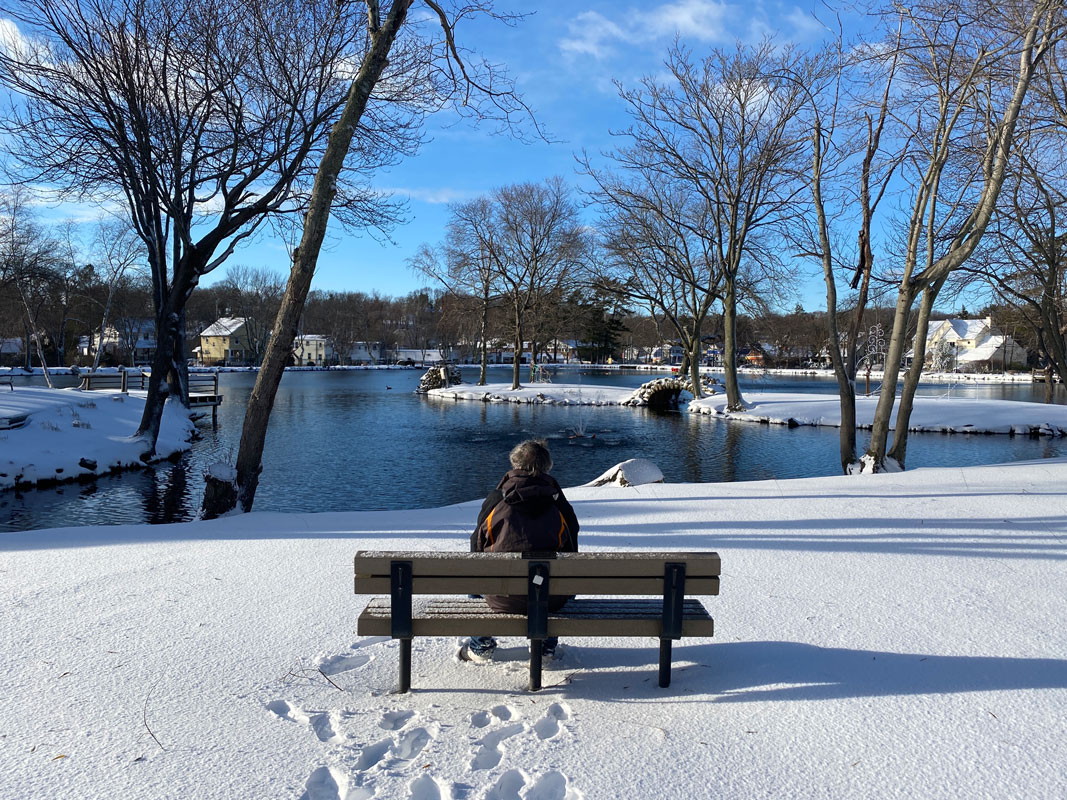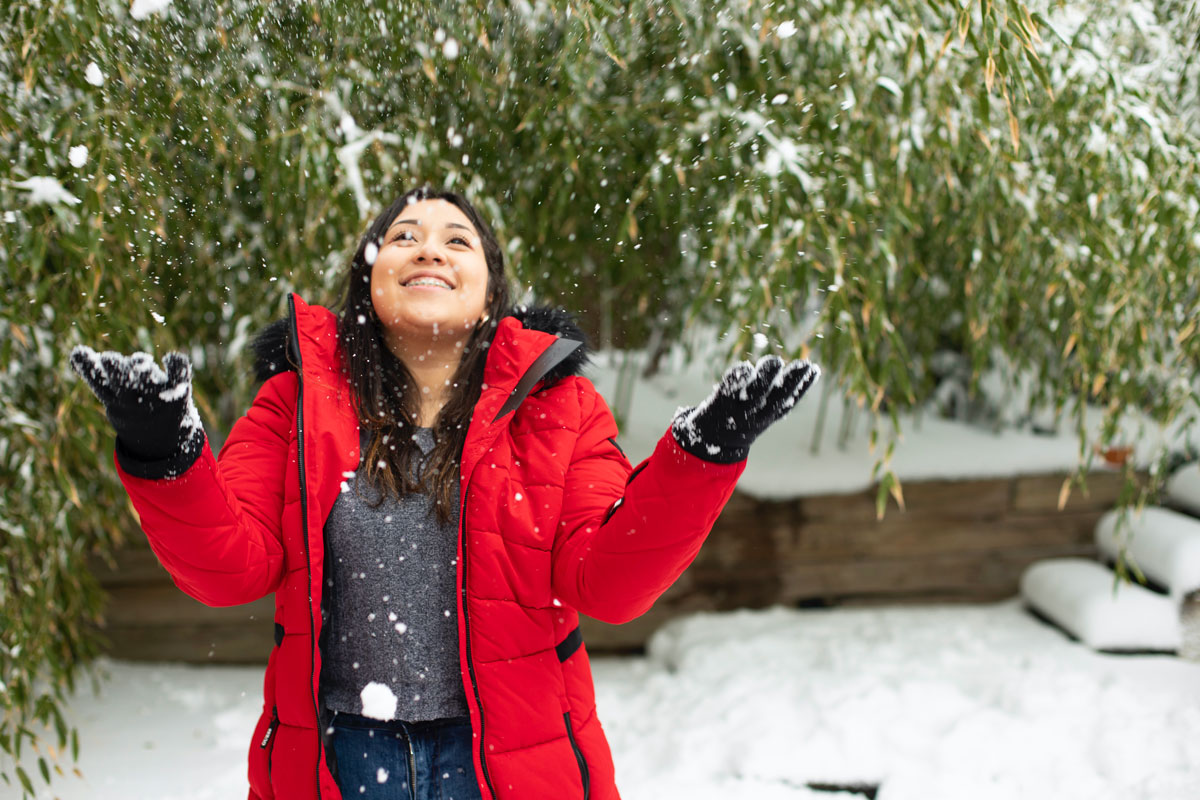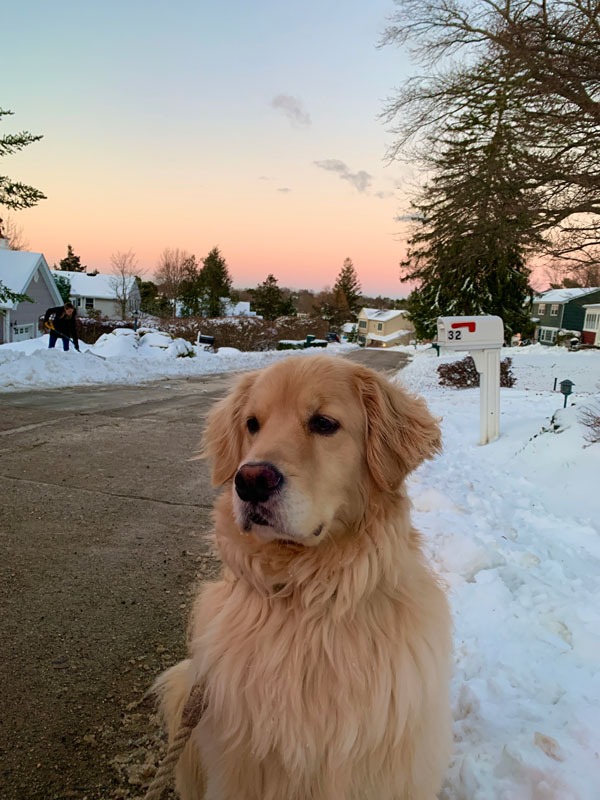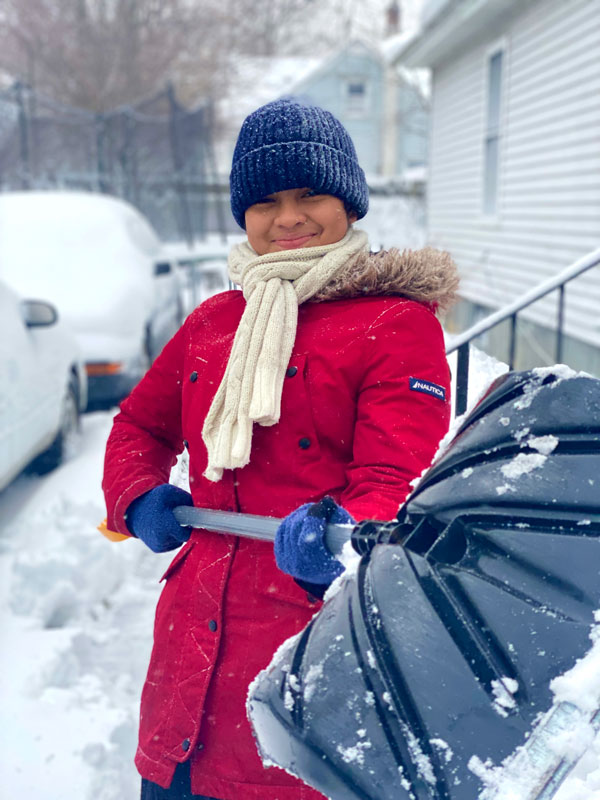With the certainty of snow in the weather forecast, Huntington High School teacher Pamela Piffard-Williams spent last Wednesday presenting a special lesson for her photography students, providing them with technical information and tips on what to look for when the storm struck so they could go out on Thursday and snap great photos.
“I just really wanted to get them out from behind the computer screen and I love the results,” Mrs. Piffard-Williams said. “They did a great job!”
“Shooting in the Snow” was a lesson that packed a proverbial punch. “Winter brings a new range of photo opportunities where familiar colorful scenes are suddenly covered in a blanket of snow,” Mrs. Piffard-Williams told her students. “Let’s have some fun taking photos in this beautiful blanket of white.”
The teenagers learned how snowy scenery can look great when a person in the midst of it, but very bland in photographs. “There is usually too much ‘blank space’ in the photo; big white areas that go on forever,” Mrs. Piffard-Williams said. “You need to look around for something that breaks up the snow, trees, rocks or anything that puts a bit of contrast into the picture.”
Students studied photos of everything from landscapes, “a pop of color” and “snowy details” to snowy landscape and snowy portraits, sledding and beach shots and even ones of a snowball fight. There were photos of blowing snow into the air and throwing snow into the air, snow angels, catching snow on your tongue, snow in the hair, snowmen and photos of snow taken through a window.
Students were assigned a project that required each of them to take 10 “snowy” photos while utilizing the ideas presented by Mrs. Piffard-Williams in Wednesday’s lesson. The teenagers were asked to “think about strong composition,” have a clear subject matter, fill the frame and turn off their camera flash.
“Once the snow gets dirty it loses its appeal,” Mrs. Piffard-Williams told the students. “Take a walk and find some white snow. Look at what is in the background. Declutter the scene as much as you can. Avoid too much white. Don’t simply take a photo of the snow. Break it up with objects, people, nature.”
Mrs. Piffard-Williams also provided her students with “advanced” shooting information. “When the camera is left to calculate the exposure by itself, it tries to read all the tones and colors in the scene and integrate to gray,” she said. “What integrate to gray means is that, if you add up all the values of all the tones and colors and average them out you will arrive at a mid-gray tone. This system works extremely well for over 90 percent of all photographs. Imagine a typical scene with some sky, a few trees and bit of ground and some people in the middle. Add up all the tones and you will come out to, near enough, mid gray every time. Here are option for saving yourself from a drift of deficiently exposed snow scenes: Spot-meter on an area of bright white snow, then open up 1.5 to 2 stops under sunny conditions or 1 stop under cloudy skies. This should give you an accurate exposure. So basically you want to overexpose the image by +1 to +2.”
Students were told that needed to be especially careful with their camera while shooting in wet weather. “Snow will quickly melt and the water could damage the camera,” Mrs. Piffard-Williams said. “Cover the camera with a clear plastic bag with a hole at the front for the lens to shoot through and wrap an elastic band around the bag on the lens barrel to hold it in place.”
The teenage Huntington High School photographers learned their lessons well based on the gorgeous photos they submitted on Friday morning.



